Social programme
Janów Podlaski is beautifully situated on a hill, in the valley of the Bug River, upon protected lands of the Podlasie Bug River Gorge Scenic Park, and attracts history enthusiasts, horse lovers, those who are particularly fond of beautiful scenery, charming corners of the world, and picturesque villages. Those who seek silence, calming landscapes and a bond with nature, will find great tourist tracks for walking, cycling and car trips, forest paths and wilderness where undisturbed nature reigns.
The participants will visit:
- ARABIAN HORSE FARM
The Janów Podlaski Stud Farm, established in 1817, the oldest state-owned and operated horse stud in Poland, is also one of the most beautiful ones. It is situated two kilometres from Janów itself, in a village called Wygoda, amidst lush meadows along the border river Bug, and is undeniably a true "equine paradise". A big attraction is the 19th century stable complex situated in an old park. The oldest of these, the Clock Stable ("Zegarowa") and the Main Stallion Stable ("Czołowa"), dating back to 1848 and 1841 respectively, are the works of the famous architect Henryk Marconi.
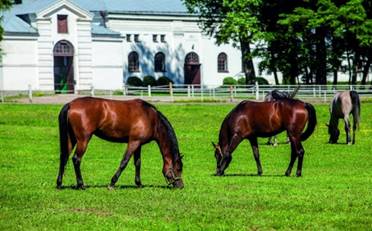
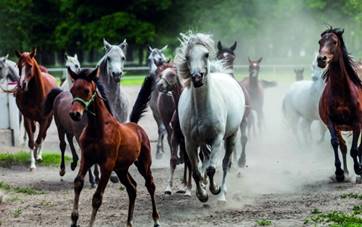
Pic. Arabian horse farm in Janów Podlaski
- THE HOLY MOUNTAIN OF GRABARKA
The Holy Mountain of Grabarka, an Orthodox shrine, is legendary for healing miracles, and is a venue of thousands of pilgrims from all over Poland, carrying votive crosses. Worship of this place and tradition of bringing crosses was born in the 18th century.
The place became famous after a healing miracle was recorded in 1710 during the cholera epidemics. To express their gratitude, the people saved from the epidemics built a wooden chapel on the top of the hill. It was later extended into the Transfiguration Orthodox Church. In 1990 the wooden church was completely destroyed by the fire - only two icons survived and a fragment of the Gospel Book. Immediately, reconstruction works began and a new church was consecrated in 1998. The spring at the foot of the hill is said to have healing properties. The Holy Mountain of Grabarka is the home of the only female Orthodox convent in Poland, the Martha and Mary Convent, founded after the Second World War
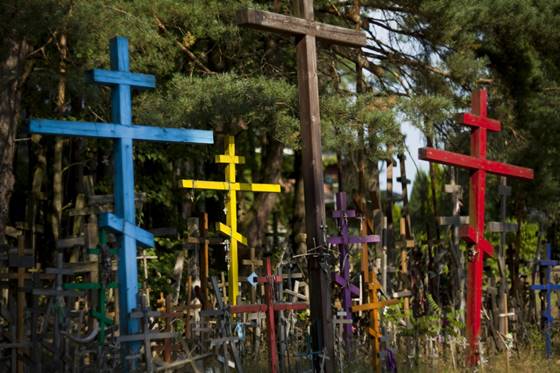
Pic. Votive crosses on the Holy Mountain of Grabarka
- MIELNIK
Mielnik is situated among gorges covered with rich vegetation, and is one of the biggest medieval towns in the Podlasie region. Its name originated from a Ruthenian word meaning “chalk” – a natural resource of the area (there is the only operating opencast chalk mine in Poland. The chalk extracted here is up to 60 million years old.
In the middle of the settlement rises the Castle Hill (180 m.) with an 11-12th century gord and the relics of a castle and moat. At the foot of the hill there are remnants of the walls of the Franciscan Church, destroyed during the First World War. On the top of the hill there are remnants of a chapel erected by the Russian government in the 19th century. Near the hill there is Our Lady’s Birth Uniate church, a wooden chapel, a synagogue and a Jewish cemetery.
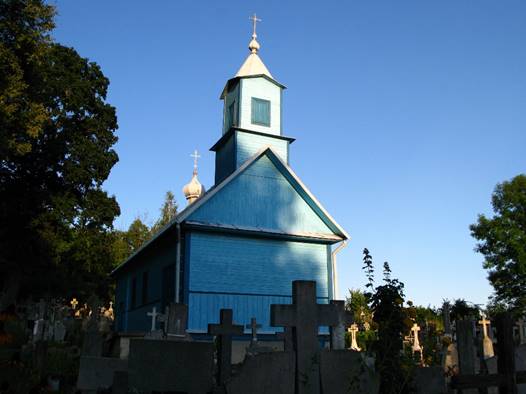
Pic. Mielnik - wooden chapel
- NIEMIRÓW
The urban layout is a remnant of the past of the town of Niemirow, with its rectangular market, transformed in to an enclosed square. In some places, old wooden houses have been preserved. Niemirow’s monuments worth seeing are the St Stanislas Church, the gate with a bell tower, built in 1823 by Fr. Marcin Niemyski in baroque-classical style.
On the bell tower there are baroque bells from the 18th century, cast in Gdańsk and Warsaw. Also, it is interesting to see the relics of a Jewish cemetery, in the forest near the state border, with its few remaining matzevas.
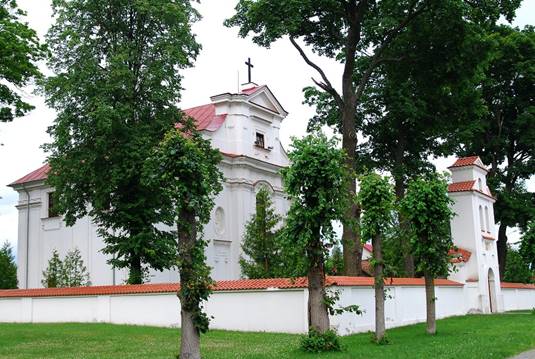
Pic. Niemirów - St Stanislas Church